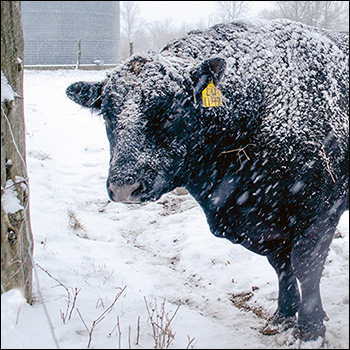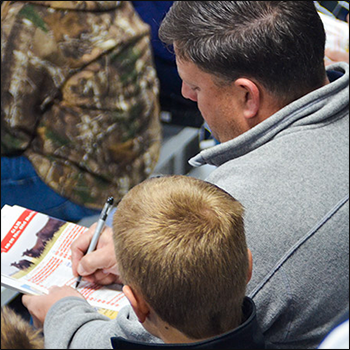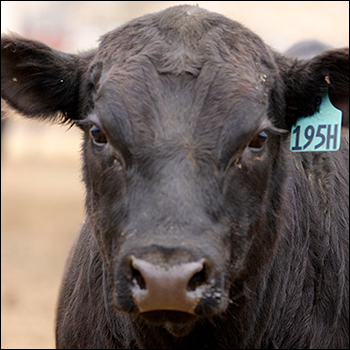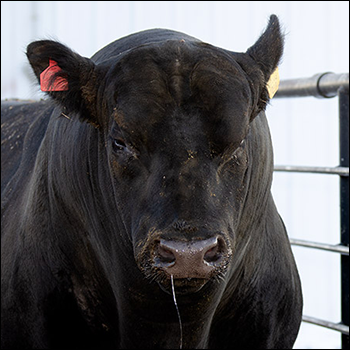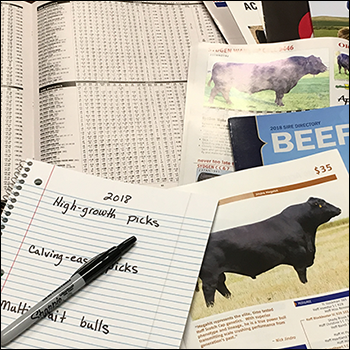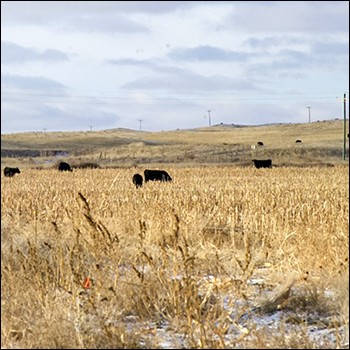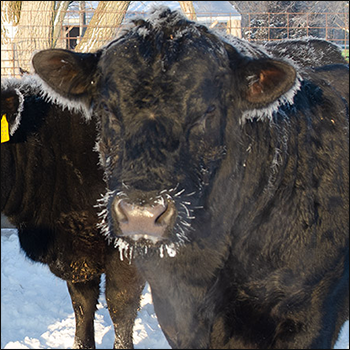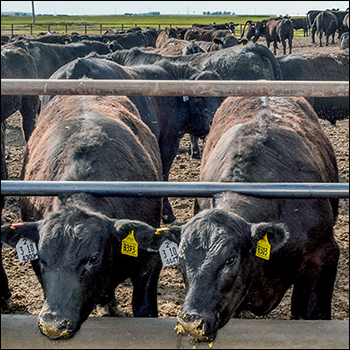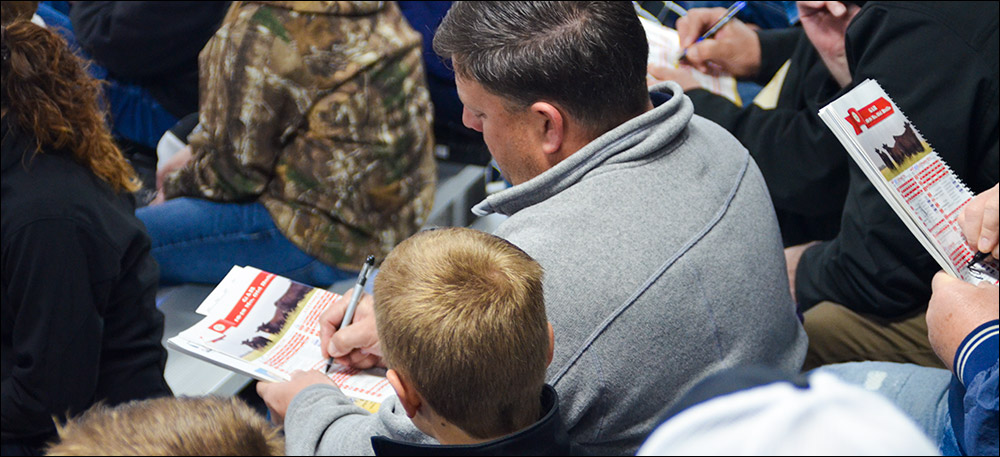
Buying Bulls With a Plan
Create your game plan before a bull sale for optimum efficiency.
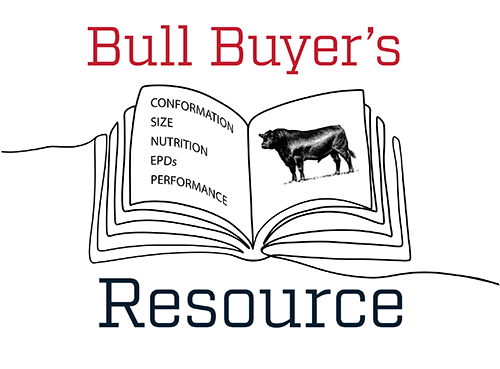
Selecting new herd sires is an annual process for beef producers. Before attending any bull sale, or ordering semen from an artificial insemination (AI) rep, take the time to read through sale books and identify which characteristics are of most and least importance for the next herd sire to contribute to your operation. The ultimate goal is to choose a sire that will enhance the current cow herd in terms of the reproductive success of the daughters he sires, as well as the performance of his terminal progeny.
The data included in sale books can help sort through bull consignments and AI directories; however, the selection process will be unique to each beef producer and their herd goals based on the environment of their operation and marketing avenue for their cattle.
Cow herd vision
Select a herd sire that will complement your herd. Take time to objectively critique areas that need improvement in your cow herd. Identify areas to improve the uniformity and marketability of future calf crops. Write a job description for the bull, and target improvement through multiple-trait selection to avoid over-selecting for a single trait.
This beef sire selection decision flow chart is handy to assist beef producers in defining breeding objectives when selecting sires. They offer some example questions to ask when setting up a breeding objective:
- Will replacement heifers be kept?
- What environmental limitations are present?
- When will calves be marketed?
Answering these questions will guide sire selection based on traits that are important to herd management and marketing.
Then determine the breeding group that the sire will be with. Will he breed heifers only, cows only or both? By answering this question, the flow chart suggests which expected progeny differences (EPDs) and indexes to consider based on your unique answers.
The remaining considerations on the flow chart gauge whether heifers out of the potential sire will be kept as replacements, as well as how and when terminal progeny will be marketed. If producers are retaining ownership of their cattle and marketing them on the grid, this helps simplify finding the genetics and EPDs that align with that end point.
Elimination
Once all the questions on the flow chart have been answered, we can sort through sale books or AI directories and decide which bulls possess the traits that are desired/acceptable and will help meet targeted breeding objectives and progress the cow herd.
Often, it is easier to begin with elimination rather than selection. Take a red marking pen and eliminate any bulls that do not meet the criteria you have established, have specific lines in their pedigree you’d like to avoid, or poor structural integrity that will inhibit their ability to effectively cover cows. Regardless of whether a bull is used by AI or natural service, it is critical he and his offspring can remain functional and sound in the environment in which they will be asked to perform.
Selection
Now that we have narrowed the playing field, reverse the process and begin evaluating those bulls that have acceptable ratings in desired traits. Take a new marker and highlight bulls that have EPDs and economic indexes that separate them from the rest of the field. If pictures and videos of the bulls are available, examine them closely. Compare them side by side for any bulls being considered to ensure that both genetic potential and phenotype meet your criteria. Will the bull complement the phenotype of the females he will be used on?
Single-trait selection is not recommended. Maximizing a single trait is not always ideal. For example, repeatedly selecting bulls with high preweaning growth (WW) and milk EPDs would raise calf weaning weights, but it would also increase energy requirements, feed costs and mature cow size if daughters were being retained. That may not be optimal. Instead, looking for a more moderate level in several traits might yield more optimum results.
Sale books and AI directories will also have additional information, such as actual birth weight, weaning weight, etc. Be cautious when selecting sires based on these measurements. They are influenced by production environment and management practices such as creep feeding, age of dam and grazing practices.
While actual animal performance is a useful tool for comparing closely related sires raised in similar conditions (i.e., half siblings in the same sale book), EPD values are the most accurate depiction of the sire’s genetic potential and his calves’ performance.
New DNA technology has greatly increased the accuracy of EPDs in young bulls and provides even more insight into their genetic potential before they have opportunity to sire their own progeny. These genomic-enhanced EPDs provide producers with EPD values at accuracies equivalent to an animal that has sired 10-36 calves, depending on the trait.
Ranking
Now that you’ve eliminated some bulls and studied the others more closely, it’s time to rank them in order of purchasing priority. Start with bulls that best possess the most acceptable EPDs, indexes and performance traits that fit your operation. This is easily accomplished for AI sires, and many of the major bull studs offer comparison tools on their websites.
If you’re planning to attend a bull sale, make sure to review and adjust rankings accordingly and determine potential purchase order well in advance of the sale-day whirlwind. In a perfect world, hopefully some of the numbers will match up and you’ll go home with a new herd sire in the trailer!
Take time to do your homework and select the correct herd sire for your operation that will progress your operation and improve your cattle. If you do, sale day and breeding season will be more relaxing as you are confident in the investments you’ve made for your cow herd’s future.
Editor’s note: This article is courtesy of SDSU Extension. It was originally written by Taylor Grussing, former SDSU cow-calf field specialist, and has been reviewed and updated by Kiernan Brandt, SDSU cow-calf field specialist. Photo by Kasey Brown.

Angus Proud
In this Angus Proud series, Editorial Intern Jessica Wesson provides insights into how producers across the country use Angus genetics in their respective environments.
 Angus Proud: Bubba Crosby
Angus Proud: Bubba Crosby
Fall-calving Georgia herd uses quality and co-ops to market calves.
 Angus Proud: Jim Moore
Angus Proud: Jim Moore
Arkansas operation retains ownership through feeding and values carcass data.
 Angus Proud: Les Shaw
Angus Proud: Les Shaw
South Dakota operation manages winter with preparation and bull selection.
 Angus Proud: Jeremy Stevens
Angus Proud: Jeremy Stevens
Nebraska operation is self-sufficient for feedstuffs despite sandy soil.

